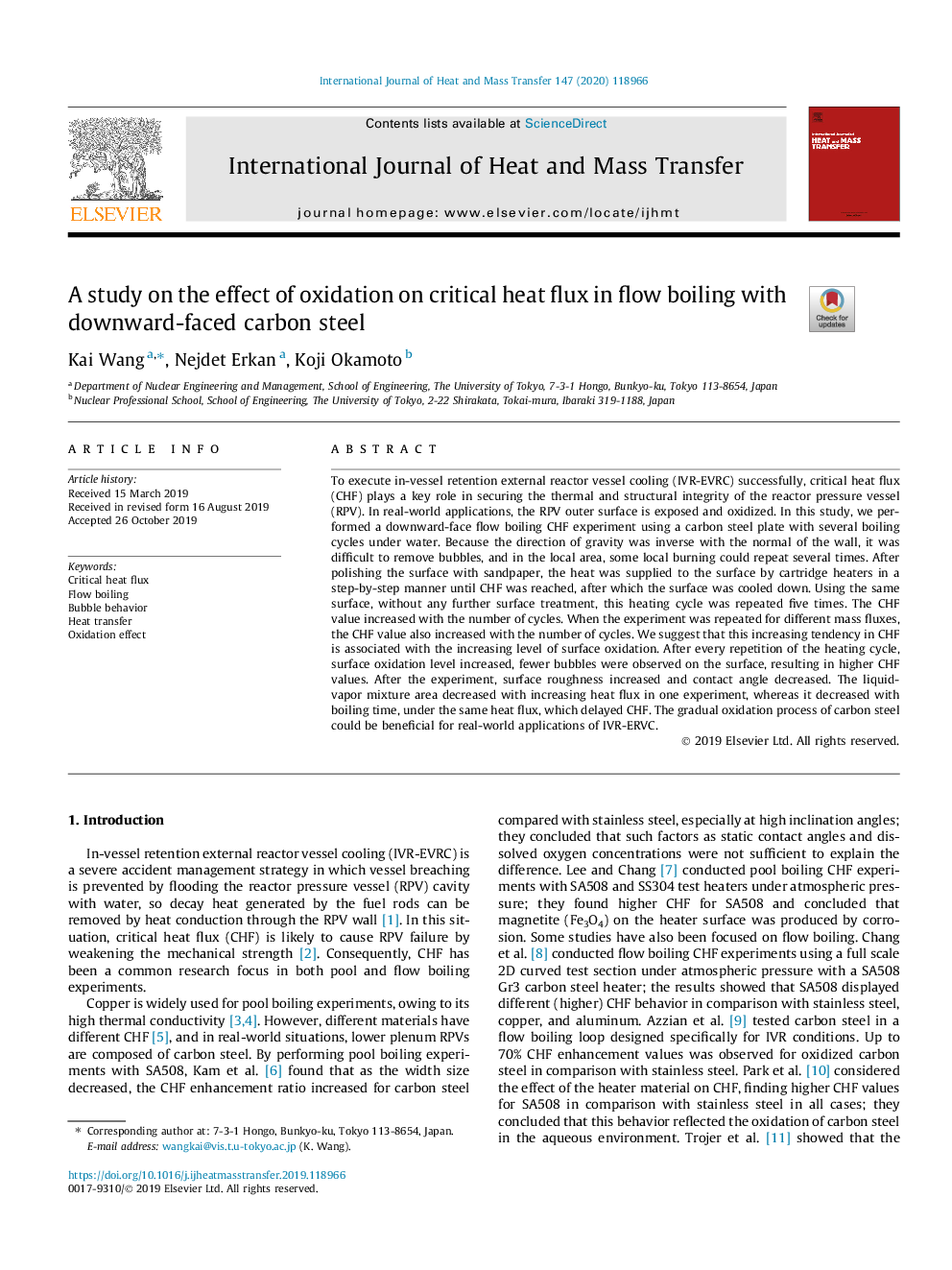| Article ID | Journal | Published Year | Pages | File Type |
|---|---|---|---|---|
| 13443965 | International Journal of Heat and Mass Transfer | 2020 | 12 Pages |
Abstract
To execute in-vessel retention external reactor vessel cooling (IVR-EVRC) successfully, critical heat flux (CHF) plays a key role in securing the thermal and structural integrity of the reactor pressure vessel (RPV). In real-world applications, the RPV outer surface is exposed and oxidized. In this study, we performed a downward-face flow boiling CHF experiment using a carbon steel plate with several boiling cycles under water. Because the direction of gravity was inverse with the normal of the wall, it was difficult to remove bubbles, and in the local area, some local burning could repeat several times. After polishing the surface with sandpaper, the heat was supplied to the surface by cartridge heaters in a step-by-step manner until CHF was reached, after which the surface was cooled down. Using the same surface, without any further surface treatment, this heating cycle was repeated five times. The CHF value increased with the number of cycles. When the experiment was repeated for different mass fluxes, the CHF value also increased with the number of cycles. We suggest that this increasing tendency in CHF is associated with the increasing level of surface oxidation. After every repetition of the heating cycle, surface oxidation level increased, fewer bubbles were observed on the surface, resulting in higher CHF values. After the experiment, surface roughness increased and contact angle decreased. The liquid-vapor mixture area decreased with increasing heat flux in one experiment, whereas it decreased with boiling time, under the same heat flux, which delayed CHF. The gradual oxidation process of carbon steel could be beneficial for real-world applications of IVR-ERVC.
Related Topics
Physical Sciences and Engineering
Chemical Engineering
Fluid Flow and Transfer Processes
Authors
Kai Wang, Nejdet Erkan, Koji Okamoto,
